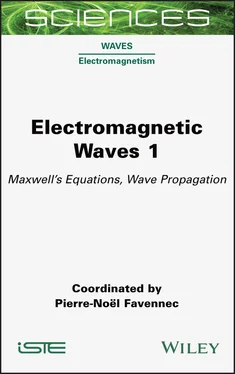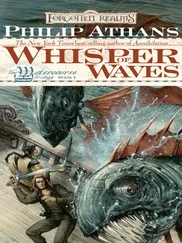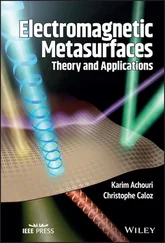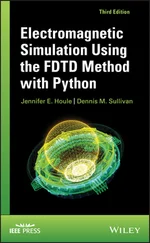1 Cover
2 Title Page SCIENCES Waves , Field Directors – Pierre-Noël Favennec, Frédérique de Fornel Electromagnetism , Subject Head – Pierre-Noël Favennec
3 Copyright First published 2020 in Great Britain and the United States by ISTE Ltd and John Wiley & Sons, Inc. Apart from any fair dealing for the purposes of research or private study, or criticism or review, as permitted under the Copyright, Designs and Patents Act 1988, this publication may only be reproduced, stored or transmitted, in any form or by any means, with the prior permission in writing of the publishers, or in the case of reprographic reproduction in accordance with the terms and licenses issued by the CLA. Enquiries concerning reproduction outside these terms should be sent to the publishers at the undermentioned address: ISTE Ltd 27-37 St George’s Road London SW19 4EU UK www.iste.co.uk John Wiley & Sons, Inc. 111 River Street Hoboken, NJ 07030 USA www.wiley.com © ISTE Ltd 2020 The rights of Pierre-Noël Favennec to be identified as the author of this work have been asserted by him in accordance with the Copyright, Designs and Patents Act 1988. Library of Congress Control Number: 2020937434 British Library Cataloguing-in-Publication Data A CIP record for this book is available from the British Library ISBN 978-1-78945-006-4 ERC code: PE2 Fundamental Constituents of Matter PE2_6 Electromagnetism
4 Preface
5 1 Maxwell’s Equations
1.1. Maxwell’s equations in a vacuum
1.2. Maxwell equations in material media
1.3. References
6 2 The Propagation of Optical and Radio Electromagnetic Waves
2.1. Introduction
2.2. Maxwell’s equations
2.3. Solving Maxwell’s equations
2.4. Characteristics of electromagnetic waves
2.5. Propagation modeling
2.6. The propagation of visible and infrared waves in the Earth’s atmosphere
2.7. Conclusion
2.8. Recommendations ITU-R
2.9. References
7 Appendix 1: Mathematical Formulae
A1.1. Trigonometric transformation equations A1.2. Series developments
8 Appendix 2: Vector Calculations
A2.1. Vectors in coordinate systems A2.2. Vector operators
A2.3. Integral transform theorems
A2.4. Fundamental relations
9 Appendix 3: Frequency Spectrum
A3.1. Introduction A3.2. The different frequency ranges
10 Appendix 4: The Decibel
A4.1. Introduction A4.2. Definition
A4.3. The different variants
A4.4. Decibel operations
A4.5. Correlation table
A4.6. Particular values
11 Appendix 5: The International Visibility Code
12 List of Acronyms and Constants
13 List of Authors
14 Index
15 End User License Agreement
1 Preface Figure P.1. A wave bath envisaged by Michel Urien 1 Figure P.1. A wave bath envisaged by Michel Urien1 This referenced work, presented in two inseparable volumes, is essential for any student, engineer or researcher wishing to understand electromagnetism and all the technologies derived from it. Volume 1 is oriented towards the basic phenomena explaining electromagnetism: the famous Maxwell equations – essential to know – then the propagation phenomena of electromagnetic waves. It only concerns non-ionizing radiation, which is radiation from waves whose energies are insufficient to ionize an atom, that is to say incapable of removing an electron from matter. This excludes all radiation with an energy greater than 12.4 eV, that is that generated by X-ray and gamma ray emitters. This work is made up of two chapters. In Chapter 1, Ibrahima Sakho presents the Maxwell equations as clearly as possible. These equations are essential to comprehensively approach electromagnetism and all its derived fields such as radioelectricity, photonics, geolocation, measurement, telecommunications, medical imagery, radio astronomy, etc. In Chapter 2, Hervé Sizun describes the propagation phenomena of electromagnetic, radio and photonic waves. Many factors, often complex, must be taken into account to properly understand these propagation problems in free and sometimes confined spaces. In Volume 2, Jean-Pierre Blot , expert in radio antennas of all configurations, directs his analysis towards antennas, essential elements for the detection of electromagnetic waves, their characterization and use. This volume is intended to describe what an effective antenna should be, according to various parameters and conditions of use. It does not address the detection problems specific to photonics. Photonics and these detection problems will be seen in a future publication of the “Waves” series. Important appendices with essential information, presenting in particular mathematical tools, complete these two volumes.
2 Chapter 1 Figure 1.1. Coulomb forces between two point and fixed charges q 1and q 2
Figure 1.2. Electrostatic field created by a fixed point charge q
Figure 1.3. Circulation of the electrostatic field about a closed contour (C)
Figure 1.4. Continuous charge distributions
Figure 1.5. Electrostatic field lines
Figure 1.6. Charge q intat the center O of a sphere with radius r
Figure 1.7. a) Electrostatic dipole; b) field lines (in green) and equipotential...
Figure 1.8. Current density vector at point M
Figure 1.9. Current density vector at point M’
Figure 1.10. Portion of a conductor with section s, traversed by a current with ...
Figure 1.11. Magnetic field created by an element with a length of a circuit...
Figure 1.12. Current distribution within volume V
Figure 1.13. Circulation of a magnetic field on a contour (C)
Figure 1.14. Magnetic dipole composed of a circular coil with magnetic moment M
Figure 1.15. Analogy a) electric dipole; b) magnetic dipole
Figure 1.16. a) Magnet far from the coil axis: an electric current occurs; b) ma...
Figure 1.17. a) Portion AC of a conductor in motion in a magnetic field; b) elec...
Figure 1.18. Area swept by a section AC of the filiform conductor in motion
Figure 1.19. Conductors in equilibriumFigure 1.20. Electrostatic field surrounding a flat charged surfaceFigure 1.21. Conductors in equilibriumFigure 1.22. Sources (S) of charges and currentsFigure 1.23. Surface S surrounding volume V containing charge carriersFigure 1.24. Electric and magnetic fields perpendicular and orthogonal to the pr...Figure 1.25. Perfect metal arranged vertically on the propagation axis of a mono...Figure 1.26. Structure of an electromagnetic stationary waveFigure 1.27. Most likely arrangement of dipole moments of the most stable polar ...Figure 1.28. Dielectric medium with volume τFigure 1.29. Refraction of the electric displacement vector across a vacuum-diel...Figure 1.30. Circulation of the electric field along an ABDF circuit overlapping...Figure 1.31. Magnetic medium with volume τFigure 1.32. Circulation of the excitation magnetic vector on a closed contour (...Figure 1.33. Refraction of the magnetic field crossing a vacuum-magnetic medium ...Figure 1.34. Circulation of the magnetic field along an ABDF circuit overlapping...Figure 1.35. Illustration of the different types of magnetism: a) magnetic momen...
3 Chapter 2Figure 2.1. Configuration of field lines of the electric fieldFigure 2.2. Configuration of magnetic field linesFigure 2.3. Diagram depicting the propagation of an electromagnetic waveFigure 2.4. The different polarization states for a wave propagating in directio...Figure 2.5. Schematic of transpolarizationFigure 2.6. Schematic representation of Fresnel zonesFigure 2.7. Representation of the different Fourier transforms on impulse respon.
Читать дальше












